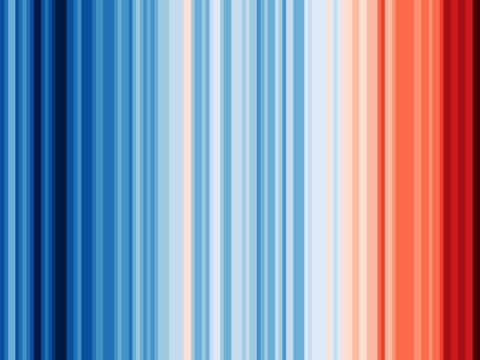
- Sea surface temperature (SST) around the UK generally shows a significant warming trend of around 0.3°C per decade over the last 40 years.
- Regional variations exist in this trend with surface warming being greatest across the southern North Sea and least across the north-west of the region.
- Warm-season (Autumn) near-bottom temperatures have increased significantly across the southern North Sea over the last 30 years, but not across other regions of the region.
- Marine heatwaves are increasing in frequency around the UK, particularly in northern regions, significantly altering ocean conditions, with growing ecological impacts and clear spatial variability across the North Sea and English Channel.
High evidence, high consensus
Sea-surface temperatures are one of the most-measured parameters in the ocean and as a result there is an abundance of evidence, and there is high confidence in the global rise in SST (e.g. Gulev et al., 2021). Measures of sea temperature at various depths are also well-established, although the data are generally only available for specific sites or sampling regions/lines. Although some of the observational records are shorter than others and have variable spatial sampling (from point observations obtained from moored buoys through to complete global coverage provided by satellite observations), they all offer a coherent picture of both long-term and shorter-term variability, giving rise to a higher level of confidence in the results. Indices relating to changes in marine heatwaves are a relatively new line of evidence, but these are based on well-established datasets of SST.
- Model simulations indicate a continuing warming trend around the UK, with average annual mean SST values predicted to be up to 3.11°C (±0.98°C) greater at the end of the century (2079–2098) compared to current conditions (2000–2019) under the RCP8.5 scenario.
- Temperatures are also projected to increase on the seafloor, with increases up to 2.49 (±0.94°C) expected by the end of the century.
- The warming is expected to be greatest across the North Sea in both SST and bottom temperatures, which is a continuation of the spatial pattern of trend observed in recent decades.
- Weaker warming is expected in subpolar North Atlantic surface temperature.
- Future warming is expected to increase the frequency of marine heatwaves, with the entire UK coastal region projected to be in marine heatwave conditions for more than half of the year by the end of the century under RCP 8.5.
Medium evidence, high consensus
There is high confidence in the long-term future warming trend. However, our confidence in the exact rates of warming at regional scales is lower. Regional projections under the high emission scenario projects an average surface warming of +2.34 °C ± 0.84 °C.
Given the nature of the broad NWS, it remains difficult to use global seasonal and decadal predictions for the seas around the UK. Nonetheless, recent research has indicated improved skill in winter predictions for certain regions around the UK using downscaling techniques. Although an increasing number of studies are being conducted on future changes in Marine Heatwaves, the local-scale uncertainty related to future mean conditions also applies to these events-based metrics. In addition, questions remain about the most appropriate heatwave index to use for examining future changes in heatwaves. Nonetheless, using the commonly used definition, UK and Irish waters are projected to be in MHW conditions for most of the year by the end-of-the-century under the RCP 8.5 scenario (Wilson et al. 2025).
There is a need to:
- Improve our understanding of changes in the near-shore environment (both long term trends and short-lived extreme events) and their impacts on industry, society and ecosystems. The near shore environment plays a critical role in providing marine ecosystem services and is affected by local processes (e.g. river plumes, coastal currents) that are usually not well captured by synoptic products, especially the future projections. Moreover, increasing temperatures will be felt more strongly in these regions due to the shallower waters, and the impacts of increasing temperature near the shore may be aggravated by compound changes due to other near-shore hazards (e.g. sea level rise and storm surges).
- Improve our understanding on the connections between the open ocean changes and shelf-sea temperatures (including the causes and effects of change in the North Atlantic subpolar gyre).
- Improve gridded data products of marine air and sea temperatures to be of a higher spatial and temporal resolution and to extend further back in time.
- Facilitate the collection and dissemination of observational data (from moored-buoys and standard sections/stations) around the UK, since only five sites could be updated to 2024 for this report using in situ measurements
- Advance climate change modelling by developing a more comprehensive treatment of uncertainty in projections. This includes improving prediction accuracy at monthly to sub-decadal timescales, generating a more diverse ensemble of realisations to better explore sources of uncertainty, producing improved near-future decadal and multi-decadal projections, and downscaling these outputs to relevant regional scales.
- Account for tidal processes in global ocean models, as global ocean models currently do not simulate tides. This omission affects the accuracy of their representation of seasonal stratification, particularly in summer on the Northwest Shelf (NWS).
- Investigate machine learning as an affordable way of downscaling projections.